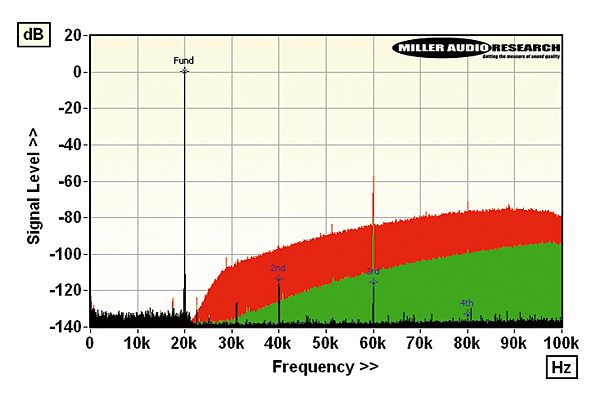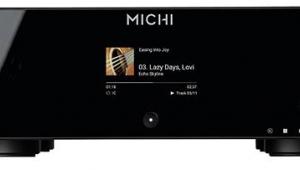dCS Rossini Transport/DAC v2 SACD Transport/DAC Number Crunching
While the Rossini DAC incorporates up to six digital filter settings [depending on sample rate], both the transport and DAC allow the upsampling of lower-rate LPCM sources to DXD (352.8kHz and 384kHz with 44.1kHz and 48kHz base sample rates) and either DSD64 or DSD128. The Scarlet Book specification disallows transcoding from SACD to high-rate LPCM. What you choose will inevitably exert some subjective impact, not least because the LPCM to DSD option releases more ultrasonic requantisation noise into your system. This is illustrated by the inset Graph which shows a 20kHz/16-bit signal from CD upsampled/transcoded into DXD [black], DSD64 [red] and DSD128 [green].

Again, whatever your choice, all data is processed through dCS's proprietary Ring DAC which aims for the pure monotonic conversion of a genuine 'single-bit' DAC via the operation of a PWM bitstream-style converter. Here DXD data is truncated (and DSD downsampled) to an average of 4.6 bits whose 24 possible values are are mapped to the 48 'identical' current sources that comprise the Ring DAC. (This resistor matrix is visible in the picture at the top of this page.) This approach differs from traditional PWM DACs that use these bits to control the length of time a single current source is held open or closed. Instead, dCS's 48 current sources can never be truly identical in size so the mapping of bits is randomised (three mapping options are offered in the menu), 'smearing' harmonic distortions into an inaudible increase in white noise. PM



















































